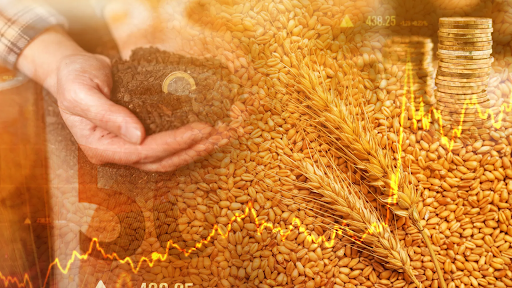
Baixe o App
-
- Plataformas de Trading
- PU Prime App
- MetaTrader 5
- MetaTrader 4
- PU Copy Trading
- Trader Web
- PU Social
-
- Condições de Trading
- Tipos de Conta
- Spreads, Custos & Swaps
- Depósitos & Retiradas
- Taxas & Encargos
- Horários de Trading

Baixe o App
As an investor or trader, understanding how various asset classes relate to each other is critical to make informed investment decisions, build diversified portfolios, and manage risk. Asset class correlation refers to the extent to which the prices of different assets move in relation to each other. In this article, we’ll examine intermarket correlations across various asset classes, explore exchange traded funds (ETFs) in trading, and discuss how to pick assets to trade based on a trading strategy.
Before delving into the intermarket correlations of different asset classes, it’s essential to understand the main market categories. There are five significant market categories that investors can participate in: the stock market, bond market, forex market, commodities market, and derivatives market. Each market category has unique features and characteristics that differentiate it from others. While each market category offers its own benefits, they are interrelated, and their correlations can significantly impact trading strategies in various asset classes.
Intermarket correlations refer to the relationships and interactions between different financial markets and asset classes. These correlations describe how changes in one market or asset class can impact or influence another.
Intermarket correlations are based on the concept that various markets and asset classes are interconnected and can exhibit simultaneous or interdependent movements. The analysis of intermarket correlations helps investors and traders understand the potential interplay between different markets and make more informed decisions.
Correlations can be positive or negative. A positive correlation between two asset classes means that they move roughly in the same direction; while a negative correlation indicates that the two move in opposite directions. The latter is also called an inverse relationship. However, what’s important to note is that there are rarely asset classes that have extremely strong or perfect correlations.
Equity and Bond Markets: Historically for the first two decades of the 21st century, there has been an inverse relationship between equity (stock) prices and bond yields. When stock prices rise, investors may shift their focus away from bonds, causing bond prices to decline and yields to rise. Conversely, during periods of stock market declines, investors may seek the relative safety of bonds, leading to lower yields.
Currency and Commodity Markets: Certain currencies can have strong correlations with commodity prices. For example, countries that are major exporters of commodities, such as Australia or Canada, often see their currencies influenced by changes in commodity prices. A rise in commodity prices may lead to an appreciation in the currency, while a decline in commodity prices may result in currency depreciation.
Risk-on/Risk-off Sentiment: Risk-on and risk-off sentiments refer to shifts in investor preferences between higher-risk and lower-risk assets. During risk-on periods, investors tend to favour riskier assets such as stocks, emerging market currencies, and high-yield bonds. Conversely, during risk-off periods, investors seek safer assets like government bonds, gold, or stable currencies such as the U.S. dollar. These sentiments can have broad implications across multiple markets.
Interest Rates and Real Estate: Changes in interest rates can impact the real estate market. When interest rates rise, borrowing costs increase, which can reduce demand for mortgages and slow down the housing market. Conversely, lower interest rates can stimulate housing activity by making borrowing more affordable.
ETFs are financial instruments that hold a collection of assets, such as stocks, bonds, or commodities, and can be bought and sold on an exchange like stocks. ETFs are designed to track a particular index or a basket of assets. They offer investors exposure to multiple assets, diversification, and low-costs. ETFs also provide traders with an opportunity to trade the intermarket correlations between different asset classes.

The dollar index is a measure of the value of the US dollar relative to a basket of foreign currencies belonging to the US’ largest trading partners at the point of the index’s creation. The currency basket currently comprises the euro, Japanese yen, British pound, Canadian dollar, Swedish krona, and Swiss franc. It was created in 1973 by the U.S. Federal Reserve to provide a reliable and objective measure of the dollar’s performance.
Of the 6 currencies, the euro makes up the largest portion at 56.6%. As a result, euro movement is often highly correlated with the Dollar Index.
One of the most important correlations to note is the inverse relationship between the U.S. dollar and commodities. Commodities like gold and oil are priced in US dollars, so changes in the value of the dollar can have a significant impact on commodity prices. When the dollar strengthens, commodities become more expensive for foreign buyers, which can lead to lower demand and lower prices. Conversely, when the dollar weakens, commodities become cheaper for foreign buyers, which can lead to higher demand and higher prices. As a result, investors in commodities should pay close attention to the movements of the dollar and factor them into their trading strategies.
In addition to the direct impact of the dollar’s strength or weakness on commodity prices, other factors can also come into play. For example, dollar strength has a historically inverse relationship with inflation thanks to the fact that a weaker dollar makes imports more costly and vice versa. Thanks to investors looking for an inflation hedge, there will be additional tailwinds for gold when the dollar weakens as inflation rises.
Moreover, the relationship between the dollar and commodity prices can also impact other asset classes. For example, a strong dollar can lead to lower stock prices as many companies rely on commodity inputs for their production, and higher commodity prices can lead to higher production costs – especially for companies whose production directly involves the purchase of raw materials.

When selecting assets for trading or investment purposes, it’s important to consider the intermarket correlations between different asset classes. For example, you would not diversify your portfolio with exposure to both crude oil and commodity-linked currencies like the Australian or Canadian dollar. That’s because the two are positively correlated, and will likely move in tandem with commodity prices. To properly hedge and lower the risks of their portfolio, an investor will look for inversely correlated assets, including gold and the U.S. dollar; or bonds and shares – especially growth ones.
The markets are a living, dynamic thing; and correlations can change, disappear, or emerge over time as market conditions change. It’s important to note that intermarket correlations are not static and are influenced by various factors, including economic conditions, geopolitical events, monetary policy decisions, and investor sentiment. Therefore, it’s essential to conduct ongoing analysis and monitor intermarket relationships to adapt to changing market dynamics.
For example, while the stock markets were positively correlated with the bonds market for much of the 70s, 80s, and 90s, but the 21st Century saw this relationship turning inverse. Even for something as intricately linked as the U.S. dollar and gold, the strength of their inverse relationship can shift greatly depending on the market conditions.
Therefore, it is important to pay attention to such major shifts, which usually accompany great changes in investor mindsets – such as periods of high inflationary pressures and interest rates – and adjust your trading or investment strategies accordingly.
Understanding the intermarket correlations between different asset classes is crucial for investors looking to build diversified portfolios and manage risk. By considering asset class correlation when selecting investments, investors can potentially achieve better returns while managing their exposure to market volatility.

Trade forex, indices, Metais, and more at industry-low spreads and lightning-fast execution.
Registe-se para uma Conta PU Prime Real com o nosso processo sem complicações
Financie sem esforço a sua conta com uma vasta gama de canais e moedas aceites
Aceda a centenas de instrumentos em condições de negociação líderes de mercado

Please note the Website is intended for individuals residing in jurisdictions where accessing the Website is permitted by law.
Please note that PU Prime and its affiliated entities are neither established nor operating in your home jurisdiction.
By clicking the "Acknowledge" button, you confirm that you are entering this website solely based on your initiative and not as a result of any specific marketing outreach. You wish to obtain information from this website which is provided on reverse solicitation in accordance with the laws of your home jurisdiction.
Thank You for Your Acknowledgement!
Ten en cuenta que el sitio web está destinado a personas que residen en jurisdicciones donde el acceso al sitio web está permitido por la ley.
Ten en cuenta que PU Prime y sus entidades afiliadas no están establecidas ni operan en tu jurisdicción de origen.
Al hacer clic en el botón "Aceptar", confirmas que estás ingresando a este sitio web por tu propia iniciativa y no como resultado de ningún esfuerzo de marketing específico. Deseas obtener información de este sitio web que se proporciona mediante solicitud inversa de acuerdo con las leyes de tu jurisdicción de origen.
Thank You for Your Acknowledgement!